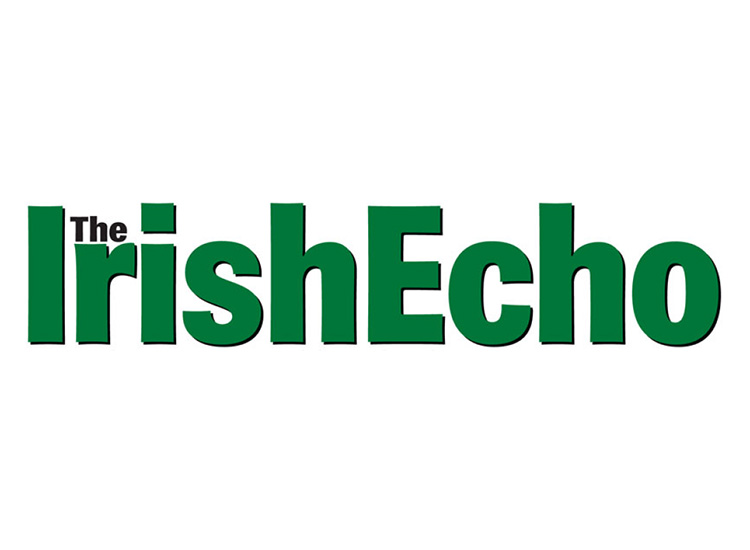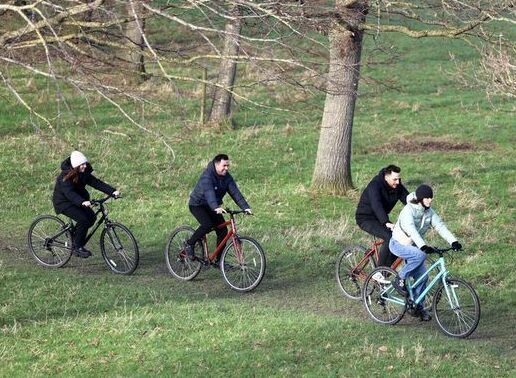The recent visit to the United States by President Michael D. Higgins left much in its wake for the historical record. With a packed schedule, the president took the opportunity to address subjects and issues affecting both Ireland and Irish America. Here below are extracts from his speeches in New York and Boston.
Great Hunger Commemoration,
Fanueil Hall, Boston
I am delighted to be here in Boston, the capital of Irish America. This is not my first time in Boston but it is my first time here as President and I cannot think of a more appropriate place to visit given the deep and historical connections between this city and Ireland.
The Irish Famine of 1845-50 was the greatest social calamity - in terms of mortality and suffering - that Ireland has ever experienced. It was also the worst social calamity based on crop failure experienced in Europe, indeed, in the 'developed' world, in modern times. The very terms in which it is described hint at its complexity, and at the different ways in which historians and the people at large have sought to describe and come to terms with the calamity: it has been referred to as 'the Great Irish Famine, the 'Great Hunger' the 'Irish Potato Famine' an Gorta Mór and, in some Irish-language communities, 'blianta an droch-shaoil.'
Although there have been Irishmen and women in Boston since this city's earliest days, it is in the aftermath of the dark days of the 1840s that famine emigration to the United States took place on a much larger and continuous scale, in particular to Boston and New York. In April 1847 over 1000 Irish emigrants landed in Boston on just one day, over 37,000 arrived in that year alone to a city whose population was only 115,000.
Irish Community Reception
Ireland House, New York
This is my first visit as President of Ireland to the United States. I wanted to come here, at this early stage of my presidency, because of all the world's great cities, New York is one where the mutual history of Ireland and America resonates so powerfully. I come here to pay tribute to the enormous contribution which Irish people and their descendants have made to create the New York of today: one of the world's foremost business, intellectual and cultural centers. Ireland can be rightly proud of the great success and energy which is so representative of the Irish Community in New York.
I am also particularly conscious of those for whom the future has remained uncertain due to their immigration status. I want to express my thanks to elected representatives at national and local levels here in the US who are continuing to work towards political outcomes which will help alleviate the problems arising for Irish people in that category.
I hope that these efforts will meet with success and I also wish to acknowledge those in the U.S. political system and throughout Irish-America who are helping the Irish government in respect of other initiatives such as in the area of E-3 visas which would assure future flows of people between our two countries.
Irish Network-NYC Business Breakfast
New York
The diversity in this room - people with backgrounds in construction or commerce, education or medicine, law or banking or so many other fields - demonstrates that the Irish or Irish-American emigrant experience is a rich and varied one. It also demonstrates the value of the old Irish saying 'ní neart go cur le chéile', in unity is strength.
You each bring your own life experience, your own mix of skills, your own background and you join together as a warm, vibrant, strong and above all welcoming community that is both a resource for, and the voice of, young Irish professionals in New York City.
And of course Irish Network-NYC is a network-within-a-network, part of the national Irish Network framework that connects Irish and Irish-American professionals across the USA. At this challenging time, networks for young professionals and other groups in this city, in particular the Irish International Business Network and the Irish Business Organisation, play a vital role in helping to connect young professionals, entrepreneurs and business people to one another.
Anyone who knows the Irish will know that it is part of our instinct to get together and talk and listen. But this network is more than just a forum in which to swap stories. You have developed a place where you can share experiences, hear exciting keynote speakers, find a mentor or a mentee and give back generously to your new and adopted communities here in New York.
Thomas Flanagan Lecture
American Irish Historical Society, New York
I can think of no better starting point for a discussion on how Ireland might be remembered and imagined than with consideration of Thomas Flanagan and his work. He defies all attempts at categorization. He was a great American writer who wrote a trilogy of great Irish novels. Tom Flanagan was the teacher who warned against any simplification of Irishness. "My Irish American identity" he said, "is typical only in the sense that there is no such typical experience". Identity, he added, is a personal matter, complex, slanted, convoluted.
The American Irish Historical Society, founded by these great supporters of Irishness at home and abroad, was as much about the future of America as about the history of the Irish in America. Like Pearse and Joyce in the decades that followed, its founders were exercising choice over what was remembered, what was retrieved from the brutal editing of history, mining the emigrant experience to replenish this country while also contributing to the construction of an emerging Irish identity.
Their intent was to create a United States that valued and welcomed diversity and that built its narrative on genuine historical integrity, on what Tom Flanagan described as "the enriching actualities of the American cultural experience". They initiated their work in the same year that Yeats and Lady Gregory began the partnership which led to the foundation of the Irish National Theatre two years later.
The foundation of this society was no isolated phenomenon but part of a wider appreciation that something very precious was disappearing and would soon be irretrievable. It was also part of a process aimed at bringing the immigrant experience into the mainstream of American memory.
United Nations
New York. Speech
on World Press Freedom Day
We meet today in acknowledgement of the fundamental role played by freedom of expression and freedom of the media in the life of every free society. Our reiteration of the principles of World Press Freedom Day is an act of solidarity but it must, in order to have authenticity, be a commitment to turn human rights aspirations in this area from aspirations to guarantees. We meet to remind ourselves of the commitments we have all made to press freedom and the challenges posed by new contingencies and new technology.
We remember the 60 brave journalists last year and the 14 this year who have given their lives in the pursuit of their profession. And we recognize the transformative power of the media, including new media, in driving societal reform increasing consciousness, creating the conditions for democratic structures to take hold in their diverse forms, informed by the rights which are universal and inclusive in their guarantees of the new technologies.
The American Ireland Fund Dinner
New York
As President of Ireland, I can tell you that the American Ireland Fund continues to make a vital and lasting contribution to the welfare of the people of Ireland. Through the projects it supports, the Fund makes a real, tangible and sustainable difference on the ground. The Fund is driven by a very effective network of highly influential individuals from the worlds of politics, culture and business that define and deliver their Irishness by connecting with Ireland in so many practical and helpful ways.
The achievement of the Peace Process in Northern Ireland is the most powerful demonstration in our era of what the Irish at home and abroad can deliver by working together. I know that many here tonight played important roles at key moments so that future generations of Irish people from all traditions, north and south, can live in peace and political harmony.
The story of Irish emigration to this country is one marked in part by tragedy and loss, but also ultimately by success and triumph over adversity. Out of that great generational movement of people who left Ireland - eight million people between 1800 and 1922 - has emerged a vast Irish-American community that thrives in its adopted homeland. But it is also a community that deeply cares about the land of its ancestors - as clearly demonstrated by the existence and success of the American Ireland Fund.
Innovation Ireland Lunch
University of Massachusetts Club, Boston
Standing here with the wonderful panoramic view of Boston Harbor behind me I cannot but be reminded of the words of John F. Kennedy when he visited my own home town of Galway in June 1963. Speaking in Eyre Square the President famously said that if the day was good enough and his sight was clear enough he could see all the way from Galway to Boston Harbor and the many Galway people working there, remarking that "nearly everyone from Boston comes from Galway". As a former Mayor and Member of Parliament for Galway, I would not dare to challenge the truth of that statement; the ties that bind Boston and Ireland are especially strong with regard to Galway and the west coast.









